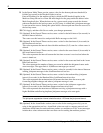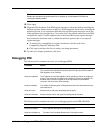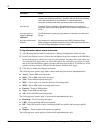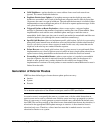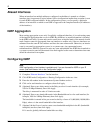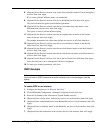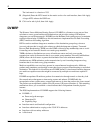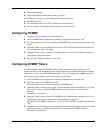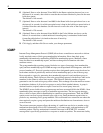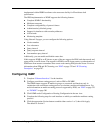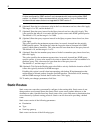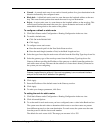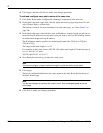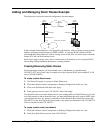
9
390 Nokia Network Voyager for IPSO 4.0 Reference Guide
The load metric is a fraction of 255.
8. (Required) Enter the MTU metric in the metric text box for each interface; then click Apply.
A larger MTU reduces the IGRP cost.
9. Click on for eth-s1p1c0; then click Apply.
DVMRP
The Distance Vector Multicast Routing Protocol (DVMRP) is a distance vector protocol that
calculates a source-rooted multicast distribution tree and provides routing of IP multicast
datagrams over an IP internetwork. DVMRP uses the Bellman-Ford routing protocol to maintain
topological knowledge. DVMRP uses this information to implement Reverse Path Forwarding
(RPF) a multicast forwarding algorithm.
RPF forwards a multicast datagram to members of the destination group along a shortest
(reverse) path tree that is rooted at the subnet on which the datagram originates. Truncated
Reverse Path Broadcasting (TRPB) uses the IGMP-collected group membership state to avoid
forwarding on leaf networks that do not contain group members.
TRPB calculates a distribution tree across all multicast routers and only saves packet
transmissions on the leaf networks that do not contain group members. Reverse Path Multicast
(RPM) allows the leaf routers to prune the distribution tree to the minimum multicast
distribution tree. RPM minimizes packet transmissions by not forwarding datagrams along
branches that do not lead to any group members.
Multicast capabilities are not always present in current Internet-based networks. Multicast
packets must sometimes pass through a router that does not support IP multicasting to reach their
destination. This behavior is allowed because DVMRP defines a virtual tunnel interface between
two multicast-capable routers that might be connected by multiple non-multicast capable IP
hops.
DVMRP encapsulates IP multicast packets for transmission through tunnels so that they look
like normal unicast datagrams to intervening routers and subnets. DVMRP adds the
encapsulation when a packet enters a tunnel and removes it when the packet exits from a tunnel.
The packets are encapsulated with the IP-in-IP protocol (IP protocol number 4). This tunneling
mechanism allows you to establish a virtual internet that is independent from the physical
internet.
The IPSO implementation of DVMRP supports the following features.
DVMRP v.3
Prune and graft messages
Generation ID
Capability flags
Interface metric and threshold configuration
Interface administrative scoping on the 239.X.X.X addresses
Interfaces with secondary addresses
iclid wizards



